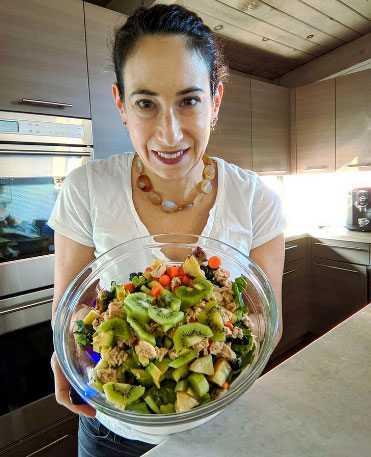 Managing joint pain is a full-time job. It takes a multi-strategy approach to get those joints moving again. Last month I discussed how nutrition and supplements can help alleviate pain, and you can find that post here. Today I’m focusing on the lifestyle aspect of managing pain, including stress and sleep. Although they are not the most obvious answers, getting a better handle on your stress and sleep can make a world of difference.
Managing joint pain is a full-time job. It takes a multi-strategy approach to get those joints moving again. Last month I discussed how nutrition and supplements can help alleviate pain, and you can find that post here. Today I’m focusing on the lifestyle aspect of managing pain, including stress and sleep. Although they are not the most obvious answers, getting a better handle on your stress and sleep can make a world of difference.
Sleep
There is nothing more frustrating than trying to sleep with joint pain. Sometimes it is impossible when your stiff joints wake you up and you just can’t get comfortable in bed. It’s also this vicious cycle when it comes to sleep and inflammation. Joint pain interferes with sleep, yet lack of sleep increases the production of inflammatory cytokines which causes more inflammation (1).
The other unfortunate side effect of inflammation is how it disrupts our circadian rhythm. I went into great detail about the circadian rhythm and why it is important in this post. Our circadian rhythm helps keep our entire body in balance, including important sleep hormones like melatonin and cortisol. These hormones also help manage inflammation. When your sleep cycle is off, these hormones will not work properly and can also exacerbate inflammation (2).
What can you do to improve your sleep?
Similar to nutrition, there is no one size fits all solution to optimizing sleep. Trial and error will help you determine what works for you. Here are my top tips for getting better sleep to help reduce joint pain and inflammation:
1) Create a consistent sleep schedule
Going to bed and waking up at the same time helps get your body on a regular schedule. This will help you correct any circadian rhythm disruption and work towards producing enough melatonin to help you fall asleep, and cortisol to help get you out of bed in the morning.
2) Try to follow the natural light and dark cycles
It is unrealistic for many of us to go to bed right when the sun sets and wake up at sunrise. However, you can do things in your home to help mimic the outdoor environment. When the sun goes down, dim your lights in your home. Wear blue light blocking glasses to protect melatonin production. When you wake up, expose your body to natural light as soon as you can. One way to cheat this is by using screens (phone or tablet) to get a good dose of blue light.
3) Establish a sleep routine
Doing consistent, calming activities before bed signals your body that it is time for sleep. It can be as simple as turning off work an hour before bed, or reading before going to sleep. Whatever it is, try to do it every day. My sleep routine consists of blue light glasses 2 hours before bed, no work 1 hour before bed, and relaxing on the couch before heading off to sleep. Ideally I would love to take an epsom salt bath, but I rarely have time to do that every evening.
4) Consider a caffeine vacation
This is probably one of the hardest asks when I work with clients. Coffee is sacred, chocolate after dinner is sometimes necessary. But some of us just don’t metabolize caffeine efficiently. The only way to tell is to take a break from caffeine and see if your sleep improves.
Prioritizing sleep can do wonders for your joints and for chronic inflammation. It is important to put sleep on the same level as nutrition when you are working through pain reduction techniques.
Stress
The other big lifestyle factor in inflammation is stress. We clearly live in very stressful times: work, pandemic, politics, environmental destruction, family drama, or whatever else it is that gets your blood going. Some of us may be so immune to stress that we cannot even recognize it or our reaction to it. For many of us, chronic stress can trigger inflammation and exacerbate joint pain.
During a stress response, the sympathetic nervous system is activated. The adrenal glands release epinephrine and cortisol which help stimulate physiological changes to prepare your body for “flight or fight”. When the threat is over, your body switches the sympathetic nervous system off and turns on the parasympathetic nervous system. This helps to restore balance in your body. However, when your body is under a constant state of stress, the parasympathetic system does not turn on. This causes cortisol levels to remain high, which does the following:
- Increases circulating blood sugar,
- Causes a build up of adipose (fat) tissue, making it harder to lose weight,
- Increases your appetite,
- Can damage arteries and blood vessels from higher blood pressure,
- Produces more inflammatory cytokines, and
- Disrupts your circadian rhythm and sleep (3,4)
Tips for reducing stress
Similar to sleep, stress reduction techniques are very personal. Here are my favorite ways to reduce stress:
1) Meditation or deep breathing
Both of these can help stimulate the vagus nerve. The vagus nerve is responsible for activating the parasympathetic nervous system. Tapping into this activation will help your body learn how to turn it on after a stressful event has occurred.
2) Exercise
Moving your body can do wonders for stress. It is important to not overdo it though, because too much exercise can actually put more stress on the body. Exercise can include anything from walking to yoga to cycling. It does not have to be high impact or high intensity.
3) Spending time outdoors
Numerous studies show the healing benefits of nature. A recent study out of Cornell University noted that spending only 10 minutes in a natural setting can reduce stress.
4) Cold exposure
Another highly efficient way to stimulate the vagus nerve that takes seconds. Granted, those first few seconds may be painful, but the more you do it, the easier it gets. Here’s a pro tip: jump into a cold shower after a workout and it works as an instant cool down.
Improving that pesky joint pain takes work from all angles of your life: diet, supplements, sleep quality and stress management. If you are struggling with joint pain and would like to investigate alternative treatments, click here to schedule a free discovery call with me. There is no obligation to work with me, but I would love to start you on the path to feeling better.


